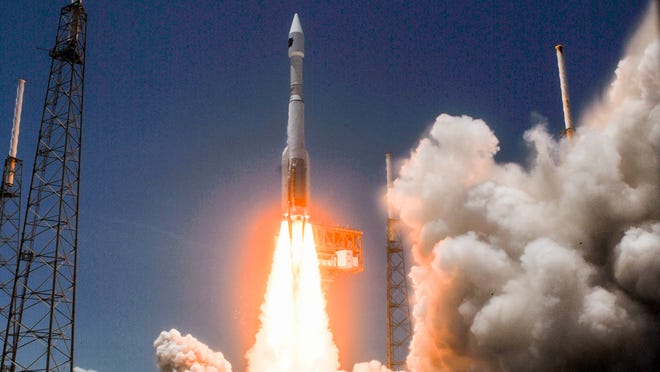
Thanks to a "wobble" in the moon's orbit and rising sea levels, every coast in the United States will face rapidly increasing high tides that will start "a decade of dramatic increases in flood numbers" in the 2030s.
The conclusion, which was published in the Nature Climate Change journal by NASA Sea Level Change Science Team from the University of Hawaii, has to do with the moon's orbit, which takes 18.6 years to complete according to NASA.
For half of that time period, Earth's regular daily tides are suppressed with high tides at a low average and low tides happening at a higher rate. In the other half of the cycle, the opposite occurs.
"High tides get higher, and low tides get lower. Global sea-level rise pushes high tides in only one direction – higher. So half of the 18.6-year lunar cycle counteracts the effect of sea-level rise on high tides, and the other half increases the effect," NASA explains.
The moon is currently in its tide-amplifying cycle right now, and there currently is no cause of concern of dramatic flooding occurring given sea levels in the U.S. haven't risen much. However, when the moon returns to the tide-amplifying cycle, the seas will have had nearly a decade to rise.
Tropical Storm Elsa:New York City subway stations flooded in waist-high water ahead
Missed the strawberry moon?:Check out these photos of the last supermoon of the year
"The higher seas, amplified by the lunar cycle, will cause a leap in flood numbers on almost all U.S. mainland coastlines, Hawaii, and Guam. Only far northern coastlines, including Alaska’s, will be spared for another decade or longer because these land areas are rising due to long-term geological processes," NASA said on Wednesday.
How severe will the floods be? In 2019, the National Oceanic and Atmospheric Administration reported more than 600 floods that year.
By the mid-2030s, scientists expect three to four times that amount.
NASA Administrator Bill Nelson said the combination of the moon's gravitation pull, which causes tides in the first place, and climate change are the reasons behind the expected flooding.
"Low-lying areas near sea level are increasingly at risk and suffering due to the increased flooding, and it will only get worse,” Nelson said in the statement.
The study also determined some floods could happen in clusters, meaning they may last over a month. Depending on the positioning of the moon, sun and Earth, cities may experience a flood in consecutive days or every other day.
While the amount of water flooding won't be as much as a hurricane does, having such frequent flooding can result in heavy economic damages.
"If it floods 10 or 15 times a month, a business can’t keep operating with its parking lot underwater. People lose their jobs because they can’t get to work. Seeping cesspools become a public health issue," said Phil Thompson, an assistant professor at the University of Hawaii and the lead author of the study.
NASA hopes the release of their findings will help potentially impacted cities take measures in order to prevent too much damage.
Rising sea levels already have made living on the coast risky, as experts say it may have played a role in the collapse of a condo building in Surfside, Florida.
Follow Jordan Mendoza on Twitter: @jord_mendoza.








